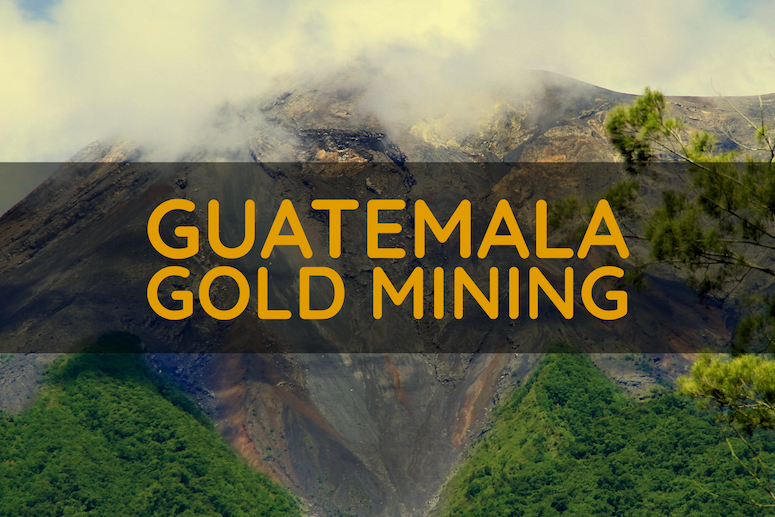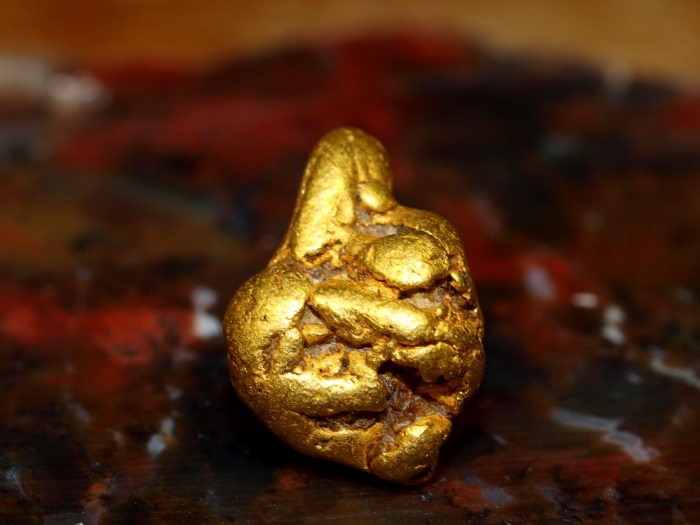
Guatemala is Central America’s most populous country and one of the most biologically rich nations. Despite its numerous and diverse natural riches, Guatemala has endured many years of conflict and as a result, its resources have not yet been fully harnessed.
Economic growth within the country as well as its different industries has left much to be desired. Mining is one particular industry in Guatemala thought to have significant potential, but remains very much untapped.
Gold: The Mayans & Spaniards
Guatemala’s natural mineral wealth is not just a recent discovery. Mining activity in the country goes as far back as the ancient Maya civilization. The use of metals, particularly gold, was a significant part of ancient Mesoamerican culture as evidenced by their intricate metalwork and craftsmanship. When the Spaniards arrived in the 16th century, interest in the natural wealth of Guatemala increased further.
With this interest, however, also came the rise of conflicts between the locals and the colonizers. These prolonged conflicts and violence combined with the lack of infrastructure to facilitate access to minerally-rich sites led to slow development in the country’s mining sector.
Between 1627 and 1820, there were about 1,300 mines established in Guatemala. Though this is relatively low compared to other countries, the minerals produced were quite diverse, including metals like gold, silver, lead, copper, tin, iron and quicksilver.
Mineralized Regions
The areas near mountains and ancient volcanoes in Guatemala are some of the most minerally rich sites in the country. This is something that major mining companies seem to agree with, as evidenced by the fact that more than 50% of mining and exploration permits are located in the country’s mountainous regions. These areas are situated north and west of Guatemala City, specifically in Quiche, Alta and Baja Verapaz, Solola, Totonicapan, Huehuetenango and San Marcos.

The Marlin Mine
San Marcos is home to Guatemala’s first large-scale gold mine, which has something of an infamous reputation. Marlin Mine was an open pit and underground mine that began development in 2005 and made use of a conventional milling circuit to process gold ore. The rich gold deposit was originally discovered in 1998 by Montana Exploradora, which was later purchased by various foreign firms and is now owned by Goldcorp.
By 2013, Marlin mine was producing around 200,000 ounces of gold, but had to cease operations in 2017. The reason for this was that the communities in the San Marcos area are largely dependent on agricultural produce such as corn, beans, coffee and the raising of livestock. As such, there was pushback against the Marlin mine in fear that its development would negatively impact the ecosystem in the area, thereby affecting local livelihood. Thus, the mineral resources adjacent to the mine remained untapped.
Cerro Blanco Mine
Another venture in Guatemala that is fairly recent is the Cerro Blanco Mine, formerly owned by Goldcorp and Glamis Gold and now by Bluestone Resources. Bluestone acquired the project in late 2017 and have completed significant work in the 18 months it has been in control of the site. Located 160km southeast of Guatemala City, the Cerro Blanco area was developed quite extensively, with about 3 kilometers of underground development.
As of 2019, development of the Cerro Blanco project is still ongoing, and the outlook remains positive. Cerro Blanco looks capable of producing around 125,000 to 150,000 ounces of gold per year. Total gold estimates for this mine were roughly 1.24 million ounces of gold.
Investment Challenges for Large Mines
Despite the recent positive developments in Guatemalan gold mining, operating here still poses quite a challenge for outside mining interests. In 2017, the Fraser Institute ranked Guatemala last amongst all jurisdictions rated in terms of Investment Attractiveness. Local conflict, high incidences of crime and lack of infrastructure are just a few of several factors that have hindered not only the development of the mining industry, but of the country as a whole.
Much of the areas for mining are quite difficult to get to, situated in the mountainous and jungle regions of the country. This may also be one of the reasons information about both lode and placer gold in Guatemala is very sparse, as foreign prospectors have yet to see the country as a safe and stable area to venture into.
Next: The Search for Gold Attracts Miners to Mexico
